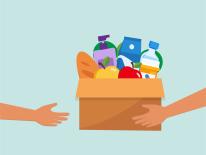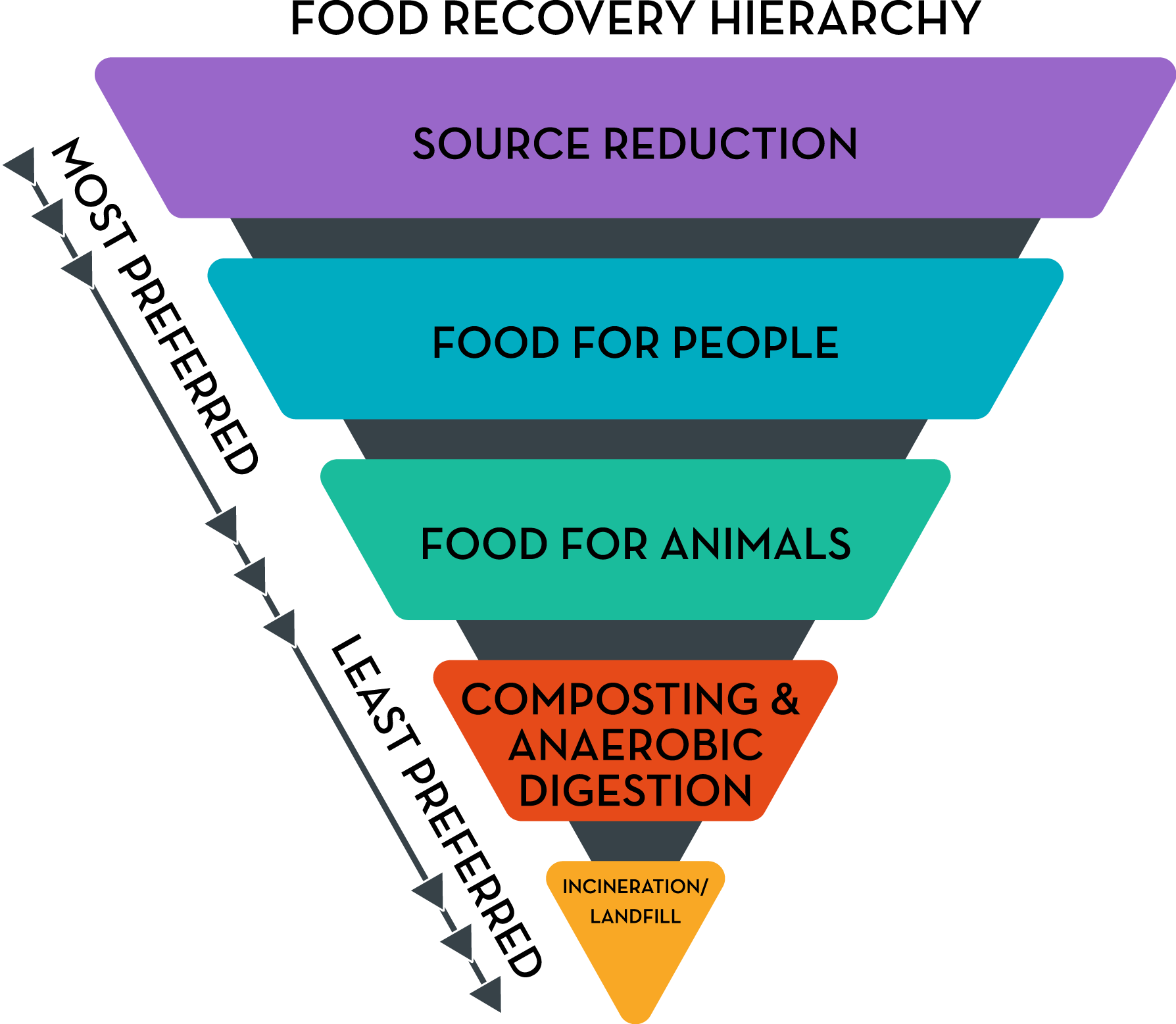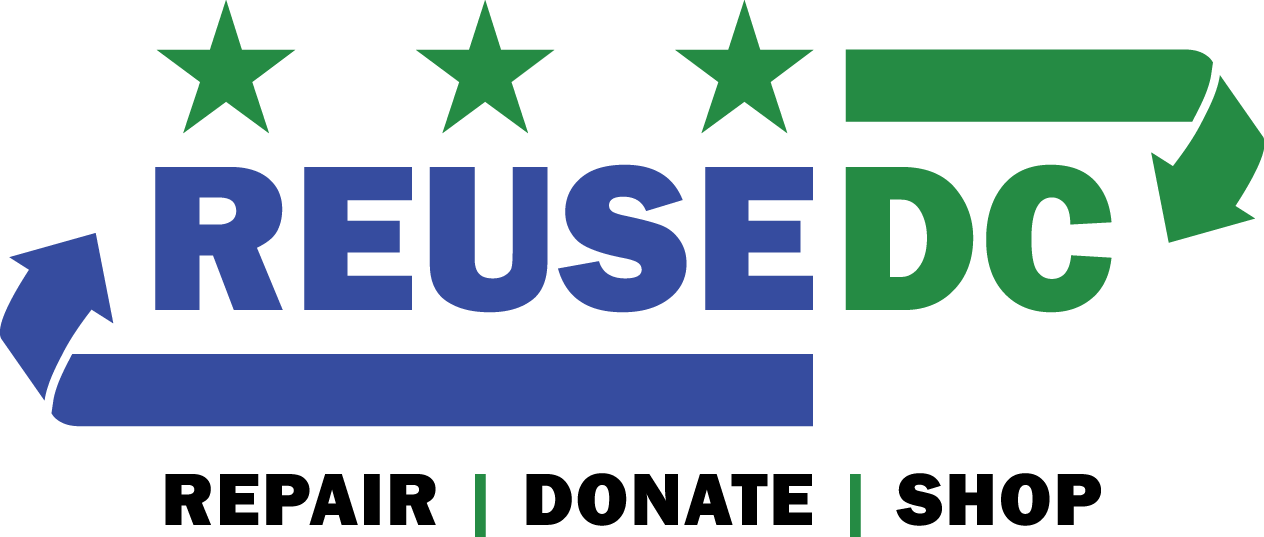
Wasted food is an economic, environmental, and societal loss. In the United States, an estimated 30% of food is wasted by retailers and consumers.
Impact of Food Waste
- Economic: From production, transportation, and disposal, food waste costs the United States over $200 billion annually.
- Environmental: In the United States, food waste is the third largest source of human-related methane emissions, an extremely potent greenhouse gas.
- Societal: Lower income communities tend to bear the biggest burden of food waste because their neighborhoods are in closer proximity to landfills or incinerators, both of which have significant health impacts.
Source Reduction
 Source reduction is the priority of the food recovery hierarchy, since it reduces the volume of surplus food generated at its source. This includes approaches at home and in food businesses to make the most of food, such as more efficient purchasing and using up food instead of throwing it out. Learn more about source reduction on the Resources page.
Source reduction is the priority of the food recovery hierarchy, since it reduces the volume of surplus food generated at its source. This includes approaches at home and in food businesses to make the most of food, such as more efficient purchasing and using up food instead of throwing it out. Learn more about source reduction on the Resources page.
After source reduction, feeding people with nutritious, wholesome food, rather than wasting it, is the most preferred way to recover food. District food businesses, individuals, and nonprofits can be part of the section below.
Learn more about how to sustainably manage food that can’t be fed to people at Zero Waste DC.
Food Waste Prevention Tips
Source reduction is the priority of the food recovery hierarchy, since it reduces the volume of surplus food generated at its source. This ranges from approaches at home and in food businesses to make the most of food.
At Home:
- Meal plan before purchasing groceries to make sure you’re buying only what you need.
- Buying fresh and local wherever possible means produce will last longer in your fridge since it spent less time in transit to get to you! Join the work to increase fresh food access in the District: check out dcfoodpolicy.org.
- Get creative with your recipes to use perishable food first and to re-energize leftovers.
- Check your food by smell and taste more than dates: many date labels are Sell By dates, which don’t reflect the time a product is designed to be in your home. A Best By date is generally a recommendation for peak taste but isn’t a reflection on food safety. Federal law only requires infant formula to have true Consume By dates.
- For tips on whether "questionable-looking" food is still good to eat, check out EatOrToss.com. The site also includes recipes for using up commonly wasted foods.
- Check out savethefood.com for recipes, a guest-imator to make the right amount of food for your guests, and lots of other tips on organizing your fridge and home!
In Food Businesses:
- Check out conserve.restaurant.org for dozens of great ways to reduce food waste in your restaurant, from menu planning to storage tips.
- Check out RescueDish for creative ways DC businesses are making the most of food by creatively using such as broccoli stems for broc tots or making carrot top pesto.
- Department of Small and Local Business Development's Food Waste Innovation Grants provide funding to businesses to cut their food waste through improvements in storage, processing, donation, and more.
Commercial Food Donation
Looking to Donate Food?
Multiple technology platforms connect food businesses with excess food with organizations that can receive food donations.
Capital Area Food Bank (CAFB)- MealConnect
- A Feeding America platform, MealConnect matches donors (food businesses of any kind) with CAFB partner agencies.
- Food businesses interested in donating can learn more and sign up at capitalareafoodbank.org/mealconnect.
Food Rescue US
- Local food donors (eg., grocers, restaurants, caterers, farmers’ markets, corporations, etc.) register available fresh food. In DC, more than 350 donors have participated since 2016.
- Learn more about how to sign up to donate food at foodrescue.us.
FoodRecovery.org (formerly MEANS Database)
- Food business donors post whenever they have extra food.
- Nonprofit users tell FoodRecovery.org what type of food they need. When any food donation fitting their need is posted, they get an email or SMS text message about it. If interested, they can claim the donation, and receive the contact information of the donor, and the donor receives contact information of the nonprofit to coordinate delivery.
- Learn more and sign up at foodrecovery.org.
Food Recovery Network
- A resource for colleges/universities, event planners, corporate dining, restaurants, grocers, and other food businesses looking to design and implement food recovery programs.
- Learn more at foodrecoverynetwork.org
Banquet Food
- The Banquet app is an end-to-end, paid service for grocery stores to increase their food donations. It simplifies the rescue creation process, hires a local driver for distribution, tracks the sustainability impact, and estimates tax receipts for the donor.
- Learn more at banquetfood.org and reach out to [email protected] for a demo.
Guidelines for Safe Commercial Food Donation
The Department of Public Works’ Office of Waste Diversion and DC Health collaborated to publish the Commercial Food Donation Guide. The guide explains fives steps to starting food donation at your commercial food business.
1. Learn: Read about which prepared, non-perishable, and dry foods can be donated by food establishments.
2. Plan: Think about the excess food your business creates and how to incorporate donation into your operations.
3. Connect: Contact organizations that accept food donations directly or use a service that can connect and transport your donations for you.
4. Safety: Remember to follow all food safety handling rules.
Volunteer as a Food Rescuer
Food Rescue US
- Join more than 400 active Food Rescue US volunteers who use their own cars to transport healthy surplus food donations from local businesses to nonprofits that assist the food insecure.
- To date, volunteers have rescued more than 8 million pounds of food with most rescues taking less than an hour from start to finish.
- Learn more about how to sign up to rescue food at foodrescue.us.
Food Recovery Network
- College/university students and food businesses interested in starting food recovery programs on campus, in daily operations, and/or at events can learn more at foodrecoverynetwork.org.
Liability Protection
With the Save Good Food Act of 2018, the District of Columbia expanded liability protection to include food donors who donate to either nonprofit organizations or directly to an individual. It also protects nonprofits that charge the end user a nominal fee to cover their production costs.
Protections to the Donor: A good faith donor who donates food to a bona fide charitable or nonprofit organization or directly to an individual for consumption is not liable for any damages unless there is evidence of gross negligence or intentional misconduct.
Protections to the Receiver: A bona fide charitable or not-for-profit organization that receives and distributes food not known or believed to be unfit for human consumption, without charge or at a charge sufficient to cover the cost of handling and preparing such food, is not liable unless the result of gross negligence or intentional misconduct.
See DC Official Code § 48–301(a-b) for complete liability protection language.
